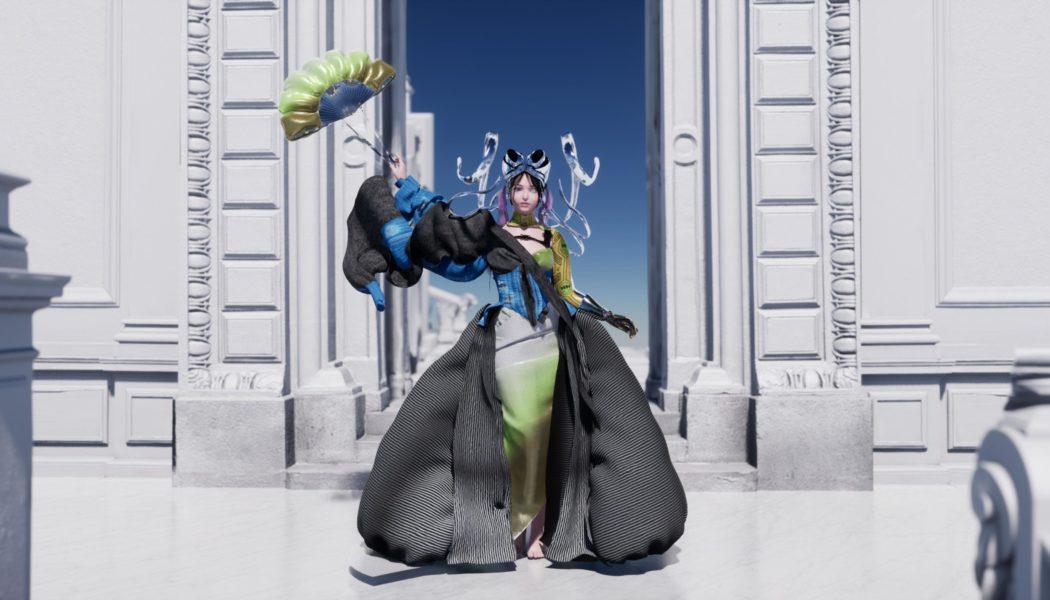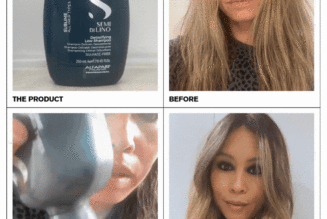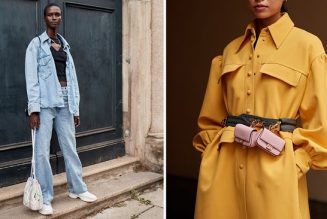
In part 1 of this deep-dive into the metaverse and luxury, I explained why the metaverse is a concept, not just a set of technologies, and examined its substantive potential for luxury brands. But as with all nascent technologies, the metaverse currently presents many challenges and is bound to give rise to many more. Among them are three areas: infrastructure/technological challenges, sustainability-related challenges, and insufficiently specified customer benefits. Intelligent strategic choices on the part of luxury leaders should turn what would otherwise have been considered major pitfalls into opportunities, and it’s the only way for luxury brands to unleash the metaverse’s full potential.
“E-commerce was about replicating the physical world in the digital world. It’s not the same with the metaverse; consumers might go for completely different things. Each brand will have to choose a strategy about their artistic identity and how much it overlaps with the real world,” Jana Arden, Head of Luxury Sector at KPMG, told me.
By soaking up the opportunities in immersive retail and sustainability that the metaverse presents, luxury brands face a win-win situation: helping shape proactively the metaverse ecosystem without waiting on big tech to do it for them whilst using the process to stay relevant.
1. Infrastructure challenges: From ‘the look and feel’ to the collapse of crypto
A personalised gaming battle station. Technological challenges still bog down a wider adoption of … [+]
From creating a look and feel for the luxury metaverse to working out the tech itself, technical and infrastructure-related challenges abound. These include the lack of comfort when wearing goggles, payment on the metaverse, or the look and feel of existing games and applications that could be said are childish at worst, or even backward. Not to mention the fact the metaverse is still difficult to access for most people; it is predominantly occupied by gamers. However, 2.5 billion people are living in it, says an Atelier BNP Paribas report.
In June 2022, bitcoin – tipped to become the preferred payment means for transactions in the virtual economy – dropped below $20,000 for the first time since 2020. It fuelled a slump across the cryptocurrency market, with another major fall in November. China’s crackdown on crypto, speculation that crypto operations could come to a halt in Russia, and sudden and severe selloffs of major cryptocurrencies have knocked investor confidence.
A third infrastructure-related challenge makes itself known when individuals make and sell items that could easily be conceived to have been created by luxury brands themselves, but in fact lack brand participation. This issue – essentially one of intellectual property – raises complex legal questions around ownership: are the sales of branded digital items legal if the brand had nothing to do with them?
2. The value creation challenge: Are brands focusing on what really matters?
So far, much of luxury’s footprint on the metaverse has come about via limited-edition NFTs. The customer value proposition is based on rarity: you manage to get hold of my NFT, which will be in limited edition, and you resell the NFT at a higher price point. This tactic is dangerous in the long run because it associates luxury with outright financial speculation. It also detracts from what the NFT represents in terms of values and being. With its incessant price rises over recent years, luxury is already at risk enough of being perceived as the business of inequality.
3. The ESG sustainability challenge: Does the metaverse really help?
Unless renewable energy becomes the main source of electricity, the metaverse and its web of servers … [+]
From conserving nature to limiting water use and protecting biodiversity, all industries know they need to contribute to the improvement of pressing environmental issues. To prevent warming beyond 1.5°C – and thus dangerous and irreversible repercussions – the world needs to reduce emissions by 7.6% each year until 2030, according to UNEP. Sustainability is no longer a luxury apart; it absolutely has to be integrated within.
Fashion is a major culprit when it comes to carbon emissions, drying up water sources, and polluting rivers and streams. Extending the life of clothes by just nine months of active use would reduce carbon, water, and waste footprints by 20-30% in each case, according to WRAP. Watches and jewellery have smaller carbon footprints but are major offenders when it comes to labour rights in the supply chain and the impact of mining on natural ecosystems. The luxury hospitality sector has its fair share of pollution. As Lonely Planet writes, “the ‘have it all’ extravagance of luxury travel can lead to terrifying volumes of waste and carbon emissions. The travel industry’s largest source of carbon emissions is the movement of goods around the world, such as furnishings, supplies and food. Luxury hotels need to get better at sourcing locally. Food, the world’s largest contributor to deforestation, also needs to be carefully monitored; not just what’s cooking, but also how much.”
Moving the needle on perspectives on luxury consumption– from tangible to digital – requires major societal shifts. We need to encourage new perspectives that gel with digital ownership, such as enjoying rather than owning and virtual traveling, which represent massive areas of opportunity.
And yet, a major contradiction of the metaverse is that it is also undeniably contributing to climate change and may be even to biodiversity losses. This is due to the extremely intensive energy consumption needed to power the servers underpinning the metaverse and blockchain. If the goal was purely to meet greenhouse gas emissions targets, luxury brands may do better staying away from the metaverse, unless they could be certain that big tech providers could rely entirely on renewable energies. The shift to more virtual consumption might negatively affect people living from tourism, say, which would adversely affect the social impact of luxury brands.
What luxury brands can do about this
The latter need to take stock of these three challenges and press on with turning them into opportunities to benefit from the metaverse in a sustainable way:
1. Ignore crypto’s volatility
An illustration of financial assets’ volatility, including cryptocurrency, bitcoin, digital assets … [+]
Bitcoin has recovered some of the ground it lost last year and is now worth around $22,000. Amidst the volatility, many companies are hesitant to invest in implementing crypto payment processing. Why might luxury firms do well to take the opposite approach?
The world’s wealthiest people are actively looking for new ways to spend. Knight Frank’s 2023 Wealth Report showed crypto to be the most volatile investment, but it still made up 2% of the average portfolio. In 2022’s equivalent report, 18% of ultra-high-net-worth individuals were shown to own a cryptocurrency. In 2023, 34% still believe the NFT market has a lot of potential.
2. Approach the battle for brand protection in the spirit of the metaverse: Collaborations
KARL BY KARL from KARL LAGERFELD x DMAT.
Brands have so far chosen to fight on the legal turf through lawsuits. Hermès won a lawsuit in February this year against artist Mason Rothschild, who was deemed to have infringed on the luxury fashion brand’s trademark of their Birkin bags by creating unauthorized NFTs of the iconic item in the metaverse. Nike and Walmart are also filing lawsuits against multiple crypto creators.
One solution, pioneered by brands including Gucci, is to be proactive, actively seeking partnerships with platforms and creators able to design luxury digital goods. NFTs and digital fashion can serve as incredibly effective tools for brands to create relevance – and profit.
3. Create real customer value: Shift gear from innovation to revolution
Artwork by Allan Gregorio featuring the CGI model Loverboy.
Why NFTs maybe interesting approaches, a far more inclusive way of using the metaverse would be to revolutionize our shopping experience. Think about it: our online shopping experience has stagnated to where it started in the mid 1990s.
One way of doing this would be to utilize immersive commerce to replicate the feel of the exclusive experience that comes from a private appointment. Imagine a virtual concierge created by AI, able to remember a customer’s name and detailed preferences, and able to spend as much time online as is paid for. Alternatively, imagine a virtual store where you feel like you’re in a physical store, but involving data, learning, and storytelling on steroids.
Dior is developing its metaverse aesthetic. In October 2022, it launched a virtual holiday pop-up store showcasing the Dior Beauty line in a digital recreation of Château de La Colle Noire, the eponymous designer’s former home in Grasse. Customers can tour the beauty room, the gift finder room, and the fragrance room, which matches shoppers’ unique personalities to their perfect perfume. The beauty room includes a customized gifting experience and the ability for virtual try-ons. The goal was to cater to Dior’s most loyal customers and immerse them in a beautiful setting.
Fashion and fragrance company Puig, whose portfolio includes Jean Paul Gaultier, Dries Van Noten, Nina Ricci, and the license of Christian Louboutin, made headlines at the 2023 Mobile World Congress in Barcelona in February whose central theme was “Experience the Future of Technology with Your Senses”. Puig Senior Perfumer Gregorio Sola Vela developed six scents that were only available during the fair and via the use of AirParfum technology. The idea was for people to be able to smell all six perfumes without feeling overwhelmed by smell, and without scent being put into the air.
“As our lives become increasingly virtual and metaverse-like, we will need to ground ourselves in sensorial experiences that go beyond sound and vision,” said Camila Tomas, expert in disruptive innovation in the fragrance industry at Puig.
The exhibit also included a virtual-versus-real taste experience. Depending on their olfactive profile, visitors received a certain “chocolate” created by a Michelin-starred chef. The connection between the olfactive preferences and the taste preferences were based on an artificial intelligence study that established a correlation between scents and flavours.
Avatars completed the Puig offering, by telling the story of one of the scents presented variously in Korean, Hindi, Chinese, French, German, English, Spanish, Catalan, Portuguese, Italian, Russian, Arabic, and Japanese.
“Why avatars? Because we love the idea of bringing the perfumer who crafted the scent – the artist – to tell his story in people’s local language,” said Tomas. “It may be controversial, but I think it humanizes the delivery of information and makes content more accessible.”
Taking a long-term view
Luxury brands need to invest, partner up, and incubate as they enter the metaverse. And they should use this three-piece toolkit as an integral part of their sustainability transformation. This also means they must resist shoehorning it into digital transformation or seeing the metaverse as a speculative approach in which they simply sell more and coax hordes of millennials – who, in 2021, were predicted to represent 50% of the total global luxury market by 2025 – into it. Since sustainability needs to be at the heart of the experiential value proposition of the metaverse, building an ecosystem will be essential for unlocking the ESG challenges that come with physical consumption and the use of web 3.00 technologies too.
Arden told me she felt luxury brands were already innovative, and adept at changing their business models. Examples include direct to consumer, subscription, and shared ownership (buying a pixel of a piece of art online). But, she said, the metaverse requires yet another model. “The importance of technical enablers, blockchain, treasury and payments in crypto, taxation when the source is not clear, cyber security: is the current operating model capable of delivering this innovation? The next steps will require further integration between the back office and the front office, an example being AI helping brands exist in the metaverse and leveraging the data.”
Wider access and virtual ownership and consumption are going to be integral to building a more sustainable world in general, and luxury brands need to be hyper vigilant. Luxury simply cannot afford to wait for the big techs such as Meta to fix the rules of the metaverse game.
The author would like to thank Maison Assouline for the permission to use some of the pictures from its book “The Metaverse Dream” in the article. Family-owned as well as part LVMH-owned, Maison Assouline – the publisher’s global flagship store in Piccadilly – has an onsite bar called Swans Bar that is serving a Metaverse Dream-themed cocktail that has a QR code in it that takes people to the publisher’s virtual storefront in Decentraland.









